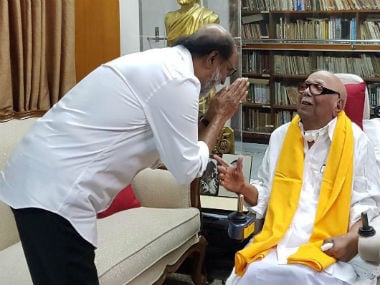In school, a science class often has a lecture and a laboratory component. In the lecture, we learn the principles, but it is in the lab that we see them in action. For example, in a chemistry lecture, a student theoretically understands how sodium can combine with chlorine to form sodium chloride. In the lab, the student actually combines the two and witnesses the dramatic chemical reaction. In the lab, our secondhand knowledge gains the backing of firsthand experience.
In spiritual matters, however, people tend to rely on the teachings of others. Yet, individuals often find themselves demanding personal experience, because secondhand knowledge cannot satisfy a craving heart. As a result, we set out on a spiritual search. The Heartfulness way is the way of experience. It is to move beyond the constraints of belief through meditation. For instance, must you believe in the sun? Must you believe in the stars? When you see something with your own eyes, belief becomes unnecessary.
Until we experience something for ourselves, we tend to doubt it. We tend to think that belief is the antidote to doubt, but in fact, belief only suppresses it, which is suppressed by cultivating belief systems. Wherever there is belief, doubt is lurking nearby.
There are different cures for this situation, but the best one is practical experience. Once you experience something, you cannot possibly doubt it. This is not a criticism of religious belief; religion is important, it is a foundation. But what are foundations? Something upon which we must build. Even if a religious teaching is perfectly true, you still have to realise that truth in your own experience.
The truth must always be realised practically, and meditation is an effective means for this to occur. When we lack practical, personal experience, various religions often appear to be vastly different from one another. Even when we familiarise ourselves with the teachings of each religion, they can still appear as being different. For example, we observe Christians seeking the kingdom of heaven, Buddhists striving for nirvana, Hindus pursuing liberation and the state of Aham Brahmasmi (I am Brahman), and Sufis striving for baqua-e-baqua (life of life).
Surely, they can’t all speak of the same truth, one would think. If one is right, the rest must be wrong. Next, we argue. We fight about which God is the true God, we argue over which philosophy is the highest philosophy. Some people get fed up and become atheists.
However, when you meditate and actually experience some of the states described in the various scriptures, you realise that all religions have the same essence. After we gain an understanding of this, exclusivity is no longer a claim one can make. Instead, you become inclusive and accepting of all perspectives.
The result is akin to climbing a mountain; you can only see the entire scene from the top. Conversely, at the base of the mountain, your perspective is limited. Suppose that on opposite sides of a mountain, two mountaineers are about to begin their climb. If you ask each one to describe what they see, their descriptions will differ. One sees trees while the other sees a cliff. Yet both observations are correct. When the mountaineers reach the summit, they look out and take in the whole expanse. Seeing other climbers below, they understand that it is each person’s unique vantage point that determines their perspective. It dawns on them that each perspective is true, but in a limited way. Put together, they form part of a greater, inclusive whole.
As you climb the mountain, your vision becomes wider, and you become more accepting of others. You empathise and become compassionate, which are the very ideas that religions promote. But if you want to actualise them in your life, you must go beyond ideas. You must actually step into the field.
Heartfulness is neither about leaving your religious tradition behind, nor is it about discarding your beliefs. It is merely the inclusion of meditation whilst retaining traditions, which will help you go deeper into that tradition and discover its true essence. As it is said in the Rigveda, "The Reality is one; the learned speak of this in many ways." In meditation, we go within and discover the Reality. We can find this wherever we are; we need not make pilgrimages to holy places, because the spiritual pilgrimage is an inner one. To initiate this inner journey, we need only close our eyes and sit quietly in meditation.
The message of Heartfulness is simple and direct: experience is greater than knowledge. In any experiment, there is an experimenter, there is a subject to be experimented upon, and there is a result. In the spiritual experiment, all three roles are yours and there is never any finality. Rather, it is an ongoing process of discovery — that is the joy and wonder of Heartfulness.
Kamlesh D Patel & Joshua Pollock are co-authors of the forthcoming book, The Heartfulness Way: Heart-Based Meditations for Spiritual Transformation.
Published Date: Jan 09, 2018 16:06 PM | Updated Date: Jan 09, 2018 16:06 PM


















